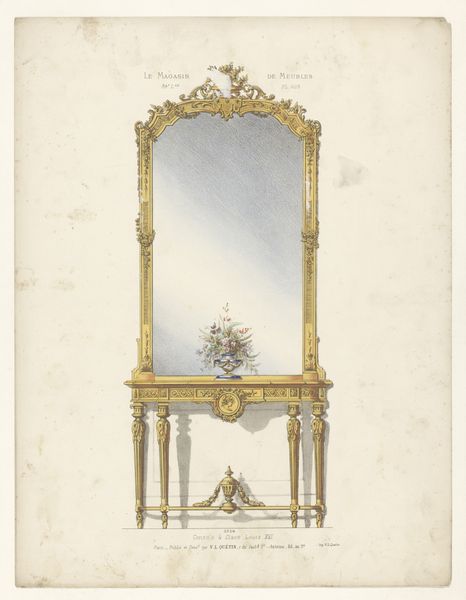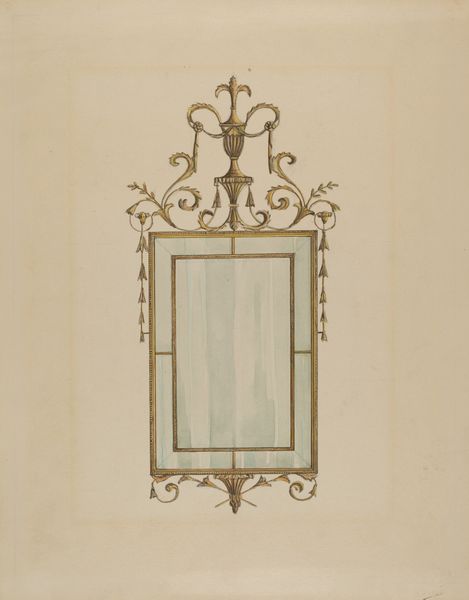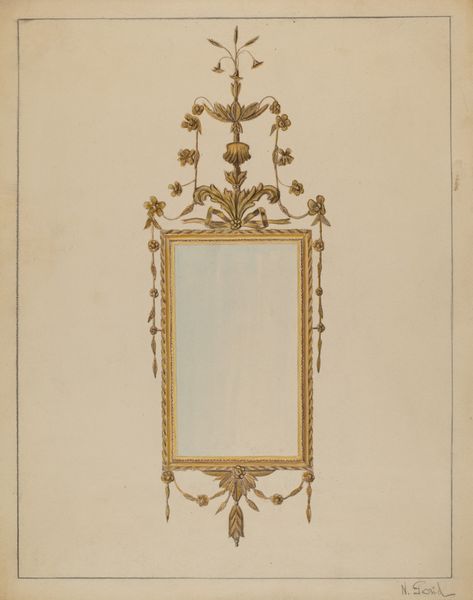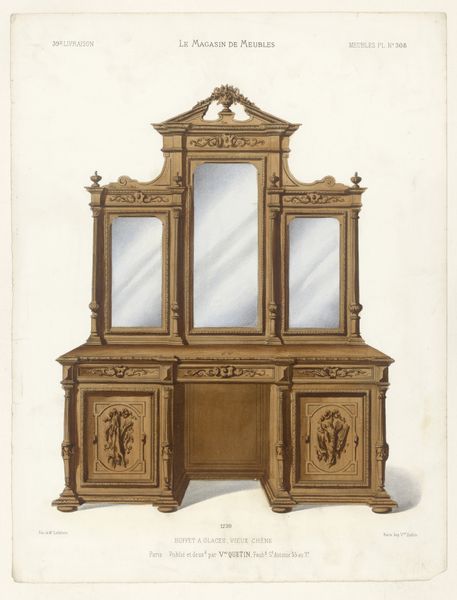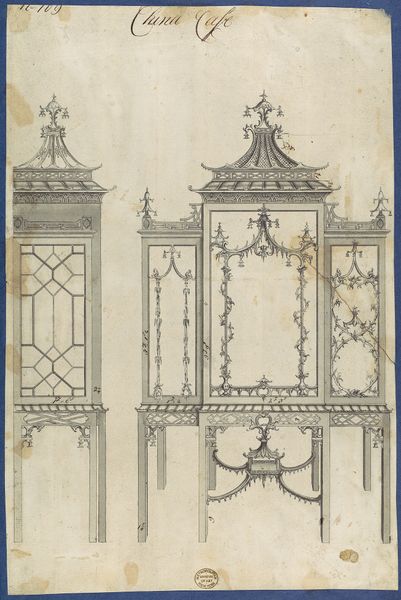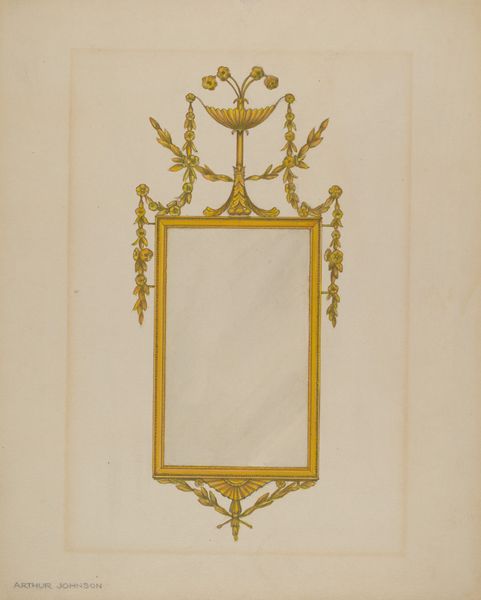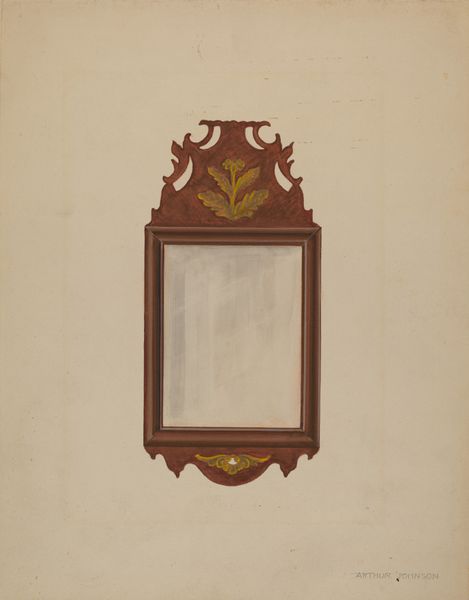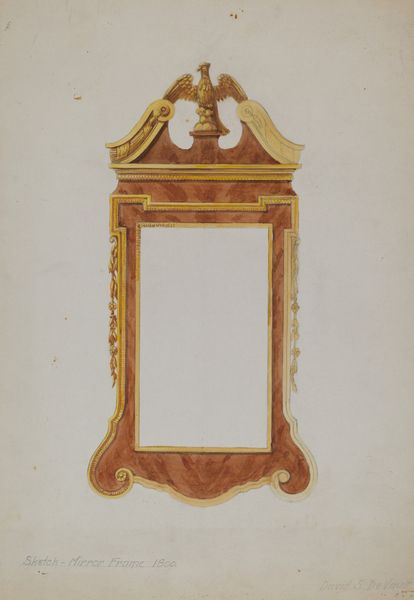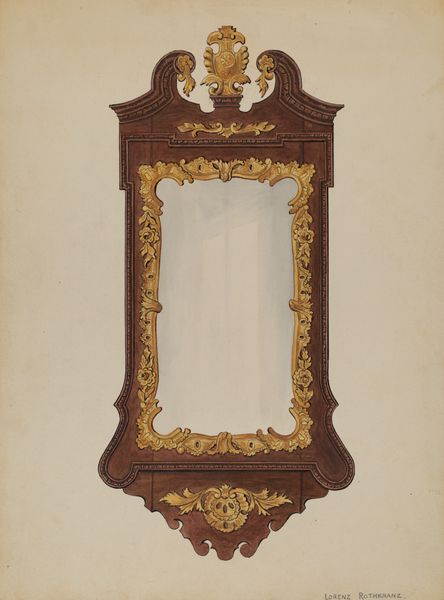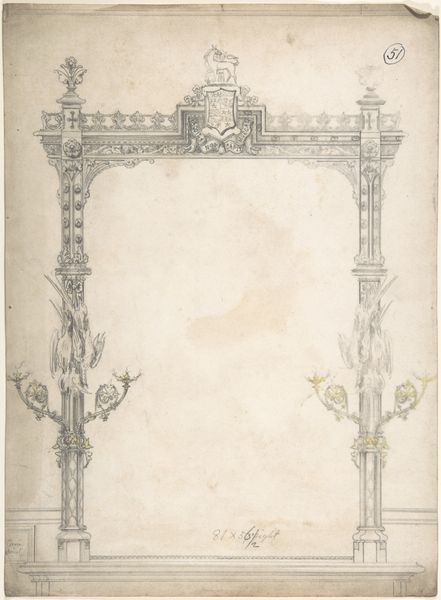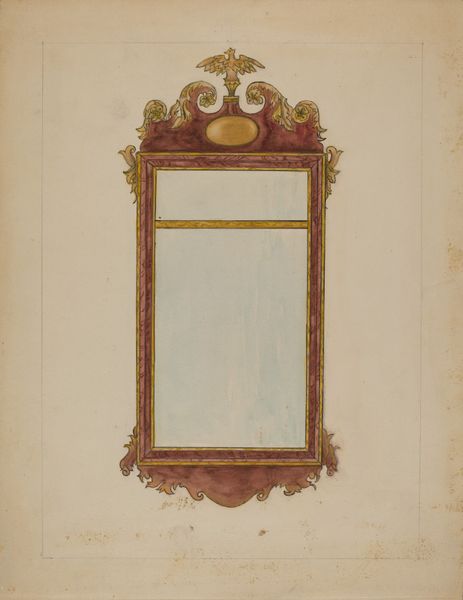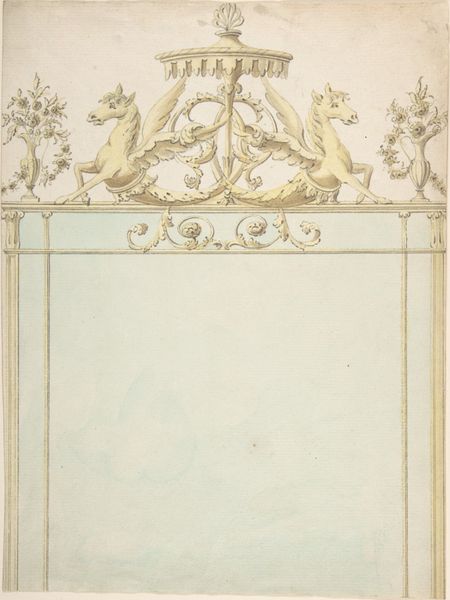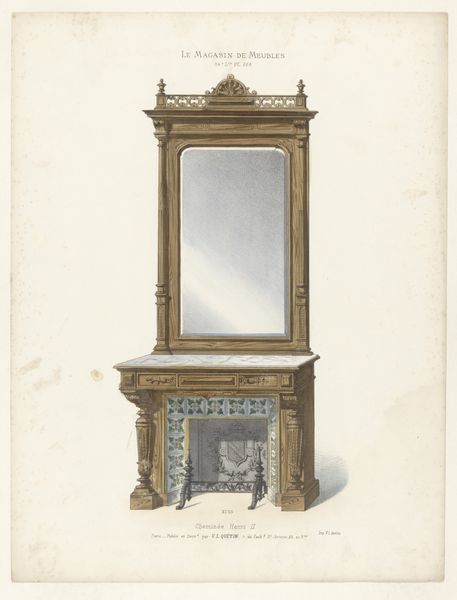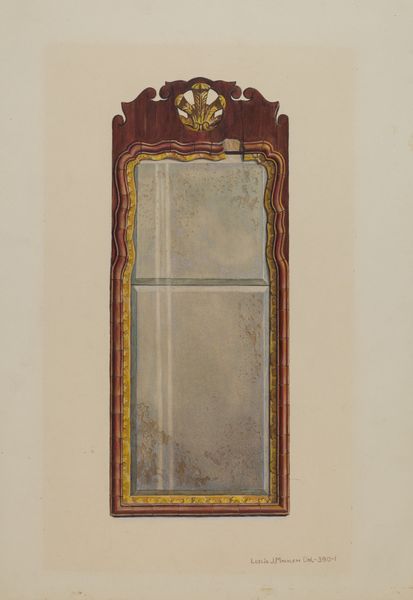
drawing, watercolor, architecture
#
drawing
#
landscape
#
historic architecture
#
watercolor
#
academic-art
#
watercolor
#
architecture
Dimensions: overall: 35.3 x 27.9 cm (13 7/8 x 11 in.) Original IAD Object: 37 1/2"high (incl. cross); 28"wide, front; 31"wide, back
Copyright: National Gallery of Art: CC0 1.0
This lovely rendering of a shrine was made by Emile Cero. He was born in 1855 and lived to be quite old, so it’s hard to know exactly when he might have made this. The cross on the top is almost weightless, as Cero models it with a series of thin lines, in contrast to the strong verticals of the columns, and the turquoise blue really pops against the off-white ground. I am drawn to the contrast between the flatness of the paper and the real object it represents, a place for devotion, prayer, meditation, who knows? I'm intrigued by the way Cero has rendered each element individually, as if he were slowly and methodically building up an image of a very real object. Look at the way the shadows describe the three-dimensional form of the shrine, and the way the gold filigree is both ornamental and functional, tying the composition together. The colors remind me of Joan Miró or maybe one of those early American folk artists who painted portraits with a limited palette and an eye for the essential. But who knows? Maybe Cero just liked blue and white. Art is funny like that: it’s always a conversation between artists, across time and space.
Comments
No comments
Be the first to comment and join the conversation on the ultimate creative platform.
